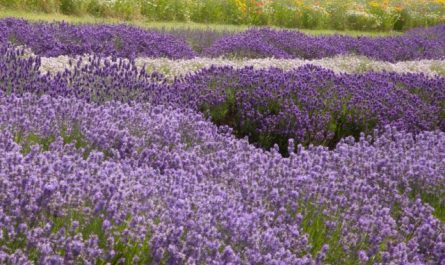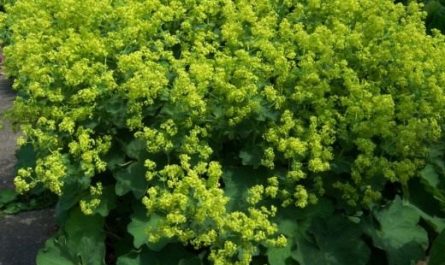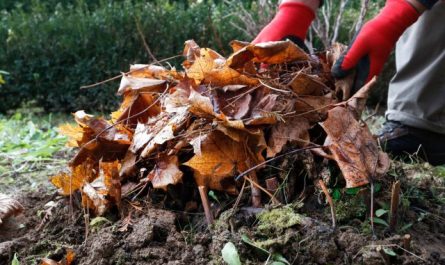Foxglove is one of my favorite garden flowers. I have been growing it every year for many years now and have probably tried all the most famous varieties of purple foxglove. Last year I learned about the existence of another type of foxglove – Merton foxglove, which is also called “strawberry”. In this article, I would like to talk about the features of these species and their differences from each other.

Foxglove – Botanical Information
Foxglove (Digitalis purpurea) is the most well-known species grown in gardens. Foxglove occurs naturally, but modern hybrids have been crossed with other species to create a wider variety of varieties. Foxglove is a biennial plant native to Western Europe, belonging to the Plantaginaceae family (formerly classified as Scrophulariaceae).
This plant forms a dense rosette of textured leaves with protruding veins in the first year of life. The leaves are ovoid or lanceolate in shape with barely noticeable rounded teeth along the edges of the leaf, sitting on a petiole formed by the lower veins.
In the second year, an erect peduncle with smaller leaves grows from the center of the basal rosette. The inflorescences usually grow from 40 cm to 1,5 meters in height, with individual flowers gradually opening from the bottom up. This species usually has a one-sided raceme consisting of 20-80 flowers. In some modern varieties, the flowers often completely surround the peduncle. The flowers look downwards, they are tubular (bell-shaped) in shape and diverge into four lobes. The corolla is usually pink, purple or white, from 2 to 5 cm long. It is covered with long hairs inside and densely dotted with dark purple spots with an expressive light border on the lower lip, which serves as a landmark and a “landing pad” for pollinating insects.
The main flowering time of foxglove is early summer, but sometimes additional flower stalks form later, especially if the faded inflorescences are cut off after flowering.

Interesting: The English name of the foxglove “Foxglove” (literally “Fox gloves”) is quite interesting. In fact, this is a distortion of the original name “Folksglove” – ”People’s gloves”, since these plants, in the old days, were considered a source of gloves for the little people, that is, elves and fairies. Therefore, of course, foxgloves have nothing to do with foxes.
The botanical name for the foxglove plant is Digitalis, which comes from the Latin word digitus, meaning finger.
Foxglove Mertonianum, description of the species
Foxglove (Digitalis x mertonensis) is the largest of the foxgloves. This species is also sometimes called the “strawberry foxglove” because it has very large flowers that are a bright pink “strawberry” color with a red center, and this is truly a unique color among foxgloves. Its beautiful flowers open in late spring and continue to open from the bottom up the stem throughout the season into autumn. The process of removing the flower stalks once they have faded will trigger a second flush of blooms. This plant is very popular with pollinators, and bumblebees are especially frequent visitors.
Its foliage is large, dark green and heavily pubescent, as a rule, it is completely preserved in winter. The plant from seeds blooms in the second year. The bush is quite wide and can be divided later.
The strawberry foxglove is a perennial plant obtained in the early 19th century by crossing the large-flowered foxglove with the purple foxglove. Therefore, it is a cross between the purple foxglove (which is a biennial) and the large-flowered foxglove (a perennial with large yellow flowers). The result is a fairly hardy perennial up to 90 cm high. Winter hardiness zone: 3-9. However, as a rule, it is a biennial, and in a cool climate it can live only 3 years.
Like biennial foxgloves, Merton foxgloves easily self-seed given suitable soil and moisture.

Differences between Foxglove purpurea and Foxglove mertonica
The flowers of Foxglove Mertonica are fluffier than those of Foxglove purpurea. The foliage and stems also appear more downy.
Foxglove mertonica is a perennial plant and can bloom in the third year, while foxglove purpurea is always a biennial.



Strawberry foxglove blooms well from summer until autumn, although most foxgloves bloom profusely only in early summer.
Foxgloves prefer shade and it is generally recommended to avoid planting in full sun. Foxgloves are more resilient and can grow well in full sun.
The flowers of the strawberry foxglove are more drooping, while those of the purple foxglove, especially modern varieties (Camelot, Candy Mountain), are bell-shaped and still slightly raised.
The speckles of Foxglove mertonensis are paler and the dots on the lower lip are blurred.
In the strawberry foxglove, the flowers are located only on one side of the peduncle, while in modern purple foxgloves they bloom around the peduncle on all sides.
Foxglove purple loves moisture, while Merton foxglove requires less water.
The flowers of Foxglove mertonensis are more flattened at the top and bottom compared to the “bell” of Foxglove purpurea.
Foxglove purpurea has semi-evergreen foliage, while Foxglove mertoniana has foliage that is considered evergreen.
Compared to other foxgloves, the leaves of the strawberry foxglove are less susceptible to spotting, powdery mildew, more resistant to sucking and gnawing pests and are more attractive.
Foxglove Mertoniensis develops more powerful bushes.
Important: Both foxgloves are poisonous. They are generally safe to touch, but no part of the plant should be ingested! However, it is recommended to wear gloves when handling foxgloves, as small amounts of the toxins could theoretically be absorbed through the skin, especially if the above-ground portion is damaged and the sap is released. Contact with the leaves may cause irritation to some people with sensitive skin.

Caring for foxgloves
Foxgloves are very easy to grow and have very few maintenance requirements. Ideal conditions for these plants vary slightly depending on the variety and species, but in general, foxgloves prefer evenly moist, well-drained soil. Foxgloves are not particularly drought-tolerant, especially when they are in bloom, so be sure to water them during this period during extended dry spells.
Foxgloves are susceptible to root rot, so make sure they have good drainage. Keep the soil moist but not soggy. They also prefer slightly acidic soil, so depending on your soil type, you may need to acidify the soil to help them grow.
Many foxgloves do best in full sun, but they are usually grown in partial shade. Sun-loving species may have more trouble with powdery mildew when planted in shady conditions.
Foxgloves generally do better in cooler temperatures and may wilt in temperatures above 30 degrees, especially when planted in full sun.
A light layer of well-decomposed mulch will usually provide enough nutrients to feed foxgloves. When grown in moderately fertile soil, foxgloves rarely need fertilizer, and too much nitrogen can harm flower production.
However, if your soil is very poor, you can add a small handful of slow-release fertilizer with an NPK ratio of 5-10-5 at planting in early spring. Avoid getting fertilizer on the foxgloves’ foliage, as this can cause burning.
Foxglove can be susceptible to attack by insect pests including aphids, slugs, caterpillars and beetles.
Foxgloves can also be affected by a variety of fungi, including powdery mildew, verticillium wilt, and leaf spot. Providing plants with good air circulation and planting in well-drained soil will help minimize these problems. If infestation is severe, treat plants with fungicides.
Foxgloves and foxgloves are used to create bold verticals in perennial beds, mixed borders, shade gardens, cottage gardens, especially against a uniform background such as a building wall, hedge or fence where they can really stand out. They also naturalise easily in natural gardens. Mass plantings of foxgloves in a single colour or similar shades can be particularly striking.




















